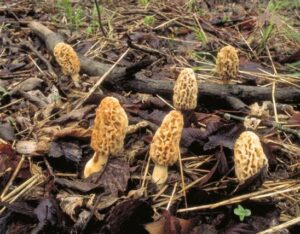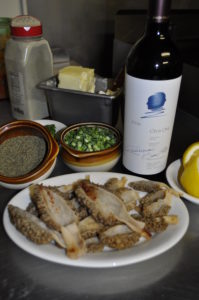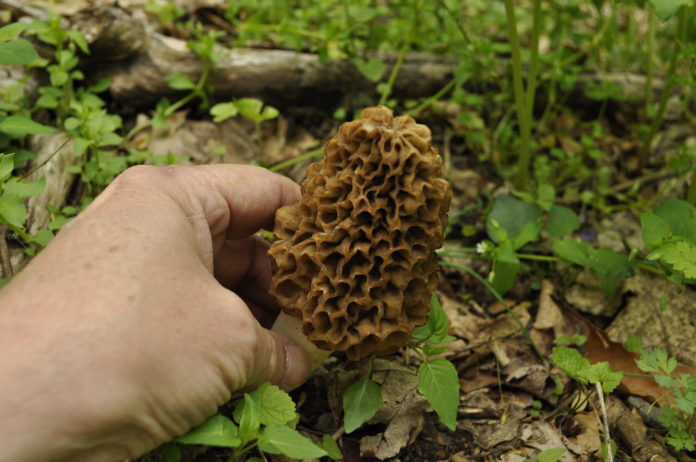How to Hunt for Morel Mushrooms: A Comprehensive Guide
Introduction:
Morel mushrooms are a prized delicacy, cherished by both chefs and outdoor enthusiasts for their unique and delectable taste. The thrill of hunting these elusive fungi offers a rewarding experience that combines a love for nature and an exciting challenge. At thehuntingpage.wpengine.com, we share your passion for the great outdoors and are eager to help you master the art of morel hunting. In this comprehensive guide, we’ll walk you through everything from identifying morels to expert tips and tricks. So, grab your gear, and let’s embark on this exciting adventure together!
Part 1: The Basics of Morel Hunting
-
Identifying Morel Mushrooms
Knowing how to identify true morels from their toxic lookalikes is critical for a safe and successful hunt. Genuine morels have a honeycomb-like cap with ridges and pits, while false morels often possess a more irregular, brain-like surface. Morels also come in different color variations like black, yellow, and gray, which can indicate the species and stage of growth.
Here’s a great piece from the Michigan Department of Natural Resources on Morel mushroom identification: https://www.michigan.gov/dnr/things-to-do/morels/morel-identification

-
Timing Your Morel Hunt
When it comes to morel hunting, timing is everything. Morels usually emerge in the spring when soil temperatures reach about 50°F (10°C). Depending on your region, this could range from late March to early June. Keep a close eye on local weather conditions and soil temperatures to determine the ideal time for your hunt. Remember, morels typically appear first in lower elevations and gradually move uphill as the season advances.
-
Prime Morel Hunting Locations
Understanding morel habitats is key to a fruitful hunt. Morels often grow near specific tree species like elm, ash, and apple trees, and in areas with moist, well-drained soil. South-facing slopes are also prime spots for morels, as they receive more sunlight and warm up faster than other areas. To boost your chances of success, search in recently burned areas or places that have experienced disturbances, like logging or flooding, where morels tend to grow in abundance.
-
Essential Morel Hunting Gear
Dressing appropriately and carrying the right equipment are crucial for a successful morel hunt. Wear long pants and a long-sleeved shirt for protection against insects and scratches, and opt for comfortable, waterproof boots to tackle wet or muddy terrain. A mesh bag is perfect for collecting morels, allowing the spores to disperse and encouraging future growth. Other handy items include a small knife for harvesting mushrooms, a GPS device or smartphone with mapping capabilities, and a walking stick for added stability and support.
-
Sustainable Harvesting and Preservation Techniques
Practicing sustainable harvesting is essential for preserving morel populations. When collecting morels, carefully cut the stem just above the ground, leaving part of the mushroom to release spores for future generations. Clean your morels gently with a soft brush or damp cloth to remove dirt or debris. To savor their unique flavor in the months ahead, consider dehydrating, freezing, or pickling your morel harvest.
-
Delicious Morel Recipes to Try at Home
Morel mushrooms are incredibly versatile and can be incorporated into various dishes. Before cooking, soak them in salt water for a short period to remove any insects. Then, try sautéing morels in butter with garlic and shallots for a simple yet mouth-watering dish. For a more elaborate meal, consider a rich morel cream sauce served over pasta or a delicious morel-stuffed chicken breast.

Part 2: Advanced Morel Hunting Techniques and Strategies
-
Developing a Systematic Search Pattern
Adopting a methodical approach to searching for morels can enhance your efficiency and yield better results. This is similar to what we recommend when you are shed hunting. Having a methodical approach and grid system can be a real boon to your success. Begin by scanning the area for potential morel habitats, such as the base of certain tree species or south-facing slopes. Once you’ve identified a promising location, start by walking slowly and scanning the ground in a zigzag pattern. This will help you cover more ground and increase the chances of spotting morels that may be hiding in plain sight.
-
Using GPS and Mapping Tools for Morel Hunting
Technology can be a game-changer when it comes to morel hunting. GPS devices and mapping apps can help you track your progress and mark the locations of your finds. By recording this information, you’ll be able to analyze patterns and identify productive hunting grounds for future expeditions. Additionally, you can share your findings with fellow hunters and collaborate to uncover new hotspots.
-
The Early Bird Strategy: Hunting Early in the Season
While morel hunting can be productive throughout the spring, being an early bird has its advantages. By venturing out at the beginning of the season, you can beat the competition and have a better shot at finding untouched patches of morels. Plus, the cooler temperatures and increased moisture at this time of year can create more favorable conditions for morel growth.
Morel Hunting: A Social and Collaborative Activity
-
Join Morel Hunting Clubs and Groups
Morel hunting can be a fantastic social activity, and joining clubs or groups can help you connect with like-minded enthusiasts. By participating in group hunts, you’ll have the opportunity to share knowledge, learn from experienced hunters, and make new friends who share your passion for the outdoors.
-
Participate in Morel Hunting Events and Forays
Attending morel hunting events and forays can be a great way to improve your skills and expand your knowledge. These organized outings often feature expert-led hunts, workshops, and presentations that provide valuable insights and tips for finding morels. Plus, they offer a fun and engaging way to connect with the morel hunting community.
-
Engage with Fellow Hunters on Online Forums and Social Media
Online forums and social media platforms are excellent resources for connecting with other morel hunters, sharing experiences, and exchanging tips. By engaging in these online communities, you can stay informed about the latest morel hunting trends, techniques, and hotspots. Here’s a cool Facebook Group: https://www.facebook.com/MushroomHunting/
Conservation and Citizen Science: Giving Back to the Morel Community
-
Get Involved in Morel Monitoring Programs
By participating in morel monitoring programs, you can contribute to scientific research and help researchers better understand morel ecology, distribution, and growth patterns. Your observations can aid in the development of conservation strategies and inform future morel hunting practices.
-
Contribute to Habitat Restoration Efforts
Morel populations are dependent on healthy ecosystems, and getting involved in habitat restoration efforts is a great way to give back to the environment. Volunteering for tree planting initiatives, invasive species removal, or stream restoration projects can make a meaningful impact on the health of the morel habitats in your area.
-
Become an Advocate or Educator for Morel Education and Outreach
Sharing your knowledge and passion for morel hunting can inspire others to get involved and practice responsible harvesting techniques. By becoming an advocate or educator, you can help raise awareness about the importance of morel conservation and promote sustainable hunting practices.
Regulations and Licensing for Morel Hunting
-
Understand Permits and Licensing Requirements in Your State
Before embarking on your morel hunt, familiarize yourself with the permits and licensing requirements in your state. Some regions may have specific rules regarding the collection of morels on public or private lands, so be sure to adhere to these regulations to avoid any legal issues.
-
Know Your Rights and Responsibilities on Public vs. Private Land
Respecting property boundaries and landowner rights is crucial when morel hunting. Always obtain permission before venturing onto private property
and follow any guidelines the landowner provides. When hunting on public land, familiarize yourself with the regulations for that specific area, as rules can vary between national parks, state parks, and other public lands.
-
Follow Leave No Trace Principles
Leave No Trace principles are essential guidelines for any outdoor activity, including morel hunting. These principles encourage responsible and sustainable practices that minimize our impact on the environment. Key guidelines to follow while morel hunting include disposing of waste properly, leaving natural and cultural features undisturbed, and respecting wildlife and other visitors.
Conclusion:
Morel hunting is a fascinating and rewarding pursuit that offers a unique opportunity to connect with nature and enjoy the bounty of the great outdoors. By mastering the basics, developing advanced strategies, and engaging with fellow enthusiasts, you can elevate your morel hunting experience and contribute to the conservation of these cherished fungi. As you set out on your morel hunting adventures, remember to always practice responsible harvesting techniques and adhere to local regulations. Happy hunting, and may your basket always be filled with these delectable treasures!




















![The Best Deer Camp Chili [VIDEO] Deer Chili Ingredients, Tomatoes, Chili Spices](/wp-content/uploads/2015/10/Deer-Chili-Deer-Camp-Recipe-218x150.jpg)
![How to Call Elk Early in the Season [VIDEO]](/wp-content/uploads/2016/08/byers003-218x150.jpg)




![Idiots Disturb Hunter: How Would You Have Handled It? [VIDEO]](/wp-content/uploads/2015/10/DSC00110-e1474487693878-100x70.jpg)
![Albino Buck Shocked to Shed His Antlers [VIDEO]](/wp-content/uploads/2015/10/AlbinoDeer-100x70.jpg)